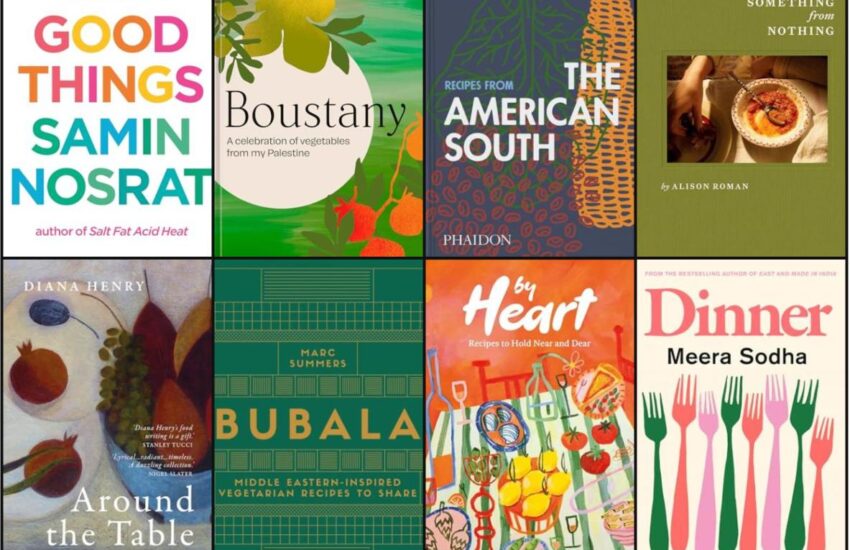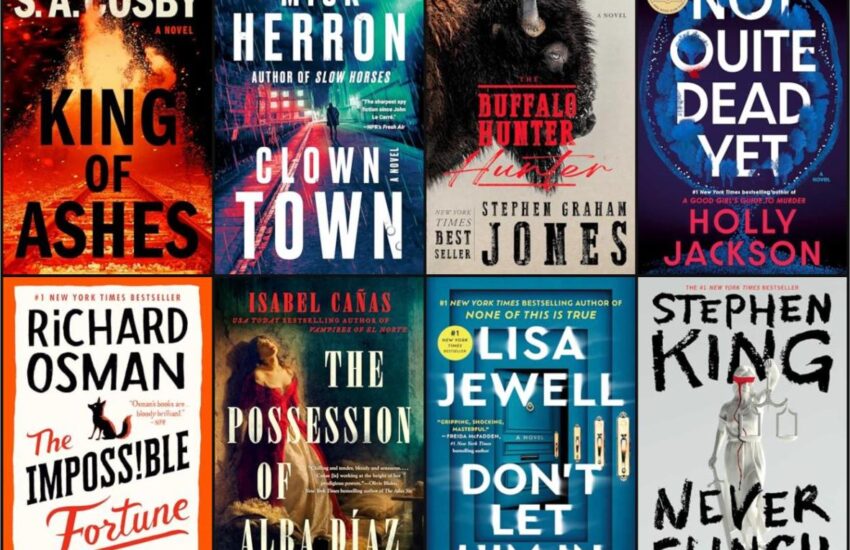The Best Books For Design Thinking
“What are the best books for Design Thinking?” We looked at 170 of the top Design books, aggregating and ranking them so we could answer that very question!
The top 24 titles, all appearing on 2 or more “Best Design Thinking” book lists, are ranked below by how many lists they appear on. The remaining 125+ titles, as well as the lists we used are in alphabetical order at the bottom of the page.
Happy Scrolling!
Top 24+ Design Thinking Books Of All-Time
24 .) Business Model Generation by Alexander Osterwalder
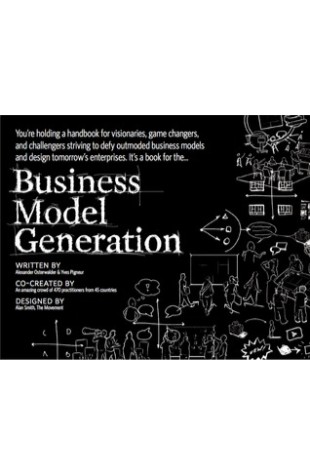 Lists It Appears On:
Lists It Appears On:
- Goodreads
- Sutherland Labs
Business Model Generation is a practical, inspiring handbook for anyone striving to improve a business model or craft a new one. 1) Change the way you think about business models Business Model Generation will teach you powerful and practical innovation techniques used today by leading companies worldwide. You will learn how to systematically understand, design, and implement a new business model or analyze and renovate an old one. 2) Co-created by 470 strategy practitioners Business Model Generation practices what it preaches. Co-authored by 470 Business Model Canvas practitioners from 45 countries, the book was financed and produced independently of the traditional publishing industry. It features a tightly-integrated, visual, lie-flat design that enables immediate hands-on use. 3) Designed for doers Business Model Generation is for those ready to abandon outmoded thinking and embrace new, innovative models of value creation: executives, consultants, entrepreneurs and leaders of all organizations.
23 .) Creative Confidence: Unleashing the Creative Potential Within Us All by Tom Kelley
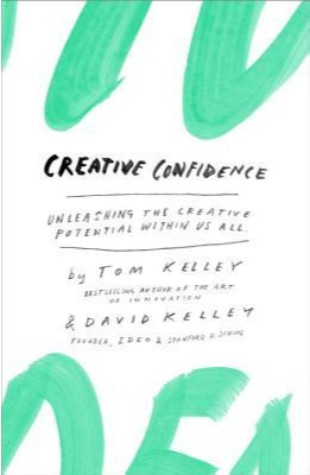 Lists It Appears On:
Lists It Appears On:
- Canva
- Goodreads
IDEO founder and Stanford d.school creator David Kelley and his brother Tom Kelley, IDEO partner and the author of the bestselling The Art of Innovation, have written a powerful and compelling book on unleashing the creativity that lies within each and every one of us. Too often, companies and individuals assume that creativity and innovation are the domain of the “creative types.” But two of the leading experts in innovation, design, and creativity on the planet show us that each and every one of us is creative. In an incredibly entertaining and inspiring narrative that draws on countless stories from their work at IDEO, the Stanford d.school, and with many of the world’s top companies, David and Tom Kelley identify the principles and strategies that will allow us to tap into our creative potential in our work lives, and in our personal lives, and allow us to innovate in terms of how we approach and solve problems. It is a book that will help each of us be more productive and successful in our lives and in our careers.
22 .) Creativity, Inc. by Ed Catmull
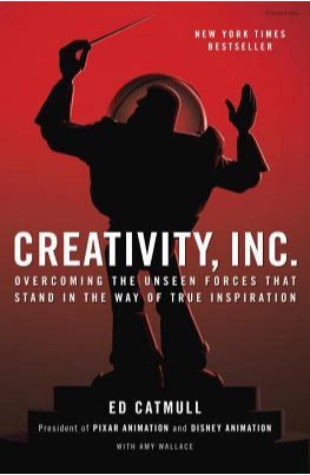 Lists It Appears On:
Lists It Appears On:
- Canva
- Mind Sea
“What does it mean to manage well?” From Ed Catmull, co-founder (with Steve Jobs and John Lasseter) of Pixar Animation Studios, comes an incisive book about creativity in business—sure to appeal to readers of Daniel Pink, Tom Peters, and Chip and Dan Heath. Creativity, Inc. is a book for managers who want to lead their employees to new heights, a manual for anyone who strives for originality, and the first-ever, all-access trip into the nerve center of Pixar Animation—into the meetings, postmortems, and “Braintrust” sessions where some of the most successful films in history are made. It is, at heart, a book about how to build a creative culture—but it is also, as Pixar co-founder and president Ed Catmull writes, “an expression of the ideas that I believe make the best in us possible.” For nearly twenty years, Pixar has dominated the world of animation, producing such beloved films as the Toy Story trilogy, Monsters, Inc., Finding Nemo, The Incredibles, Up, and WALL-E, which have gone on to set box-office records and garner thirty Academy Awards. The joyousness of the storytelling, the inventive plots, the emotional authenticity: In some ways, Pixar movies are an object lesson in what creativity really is.
21 .) Design for the Real World: Human Ecology and Social Change by Victor Papanek
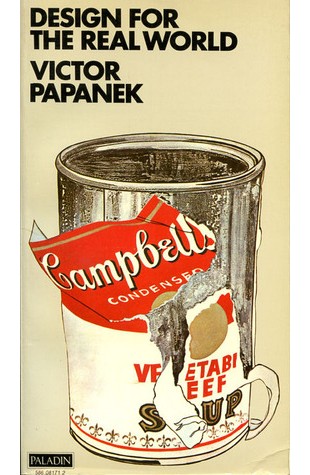 Lists It Appears On:
Lists It Appears On:
- Goodreads
- Medium
Design for the Real World has, since its first appearance twenty-five years ago, become a classic. Translated into twenty-three languages, it is one of the world’s most widely read books on design. In this edition, Victor Papanek examines the attempts by designers to combat the tawdry, the unsafe, the frivolous, the useless product, once again providing a blueprint for sensible, responsible design in this world which is deficient in resources and energy.
20 .) Designing Design
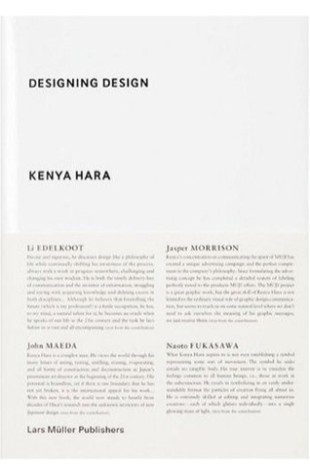 Lists It Appears On:
Lists It Appears On:
- Fast Company
- Medium
Representing a new generation of designers in Japan, Kenya Hara (born 1958) pays tribute to his mentors, using long overlooked Japanese icons and images in much of his work. In Designing Design, he impresses upon the reader the importance of emptiness in both the visual and philosophical traditions of Japan, and its application to design, made visible by means of numerous examples from his own work: Hara for instance designed the opening and closing ceremony programs for the Nagano Winter Olympic Games 1998. In 2001, he enrolled as a board member for the Japanese label MUJI and has considerably moulded the identity of this successful corporation as communication and design advisor ever since.
19 .) Disciplined Dreaming: A Proven System to Drive Breakthrough Creativity by Josh Linker
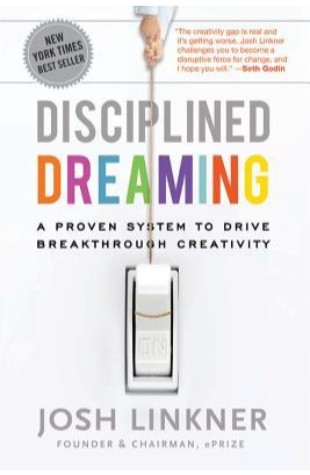 Lists It Appears On:
Lists It Appears On:
- Canva
- Creativity At Work
A 5-part process that will transform your organization — oryour career — into a non-stop creativity juggernaut We live in an era when business cycles are measured in months, not years. The only way to sustain long term innovation and growthis through creativity-at all levels of an organization.Disciplined Dreaming shows you how to create profitable newideas, empower all your employees to be creative, and sustain yourcompetitive advantage over the long term. Linkner distills hisyears of experience in business and jazz — as well ashundreds of interviews with CEOs, entrepreneurs, and artists– into a 5-step process that will make creativity easy foryou and your organization. The methodology is simple, backed byproven results. Empowers individuals, teams, and organizations to meetcreative challenges posed by the marketplace Turns the mystery of creativity into a simple-to-useprocess Shows how creativity can be used for everything frominnovative, game-shifting breakthroughs to incremental advances anddaily improvements to business processes Offers dozens of practical exercises, thought-starters, workouts to grow “creative muscles,” and case studies
18 .) Don’t Make Me Think by Steve Krug
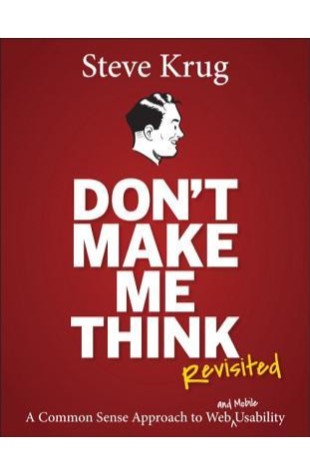 Lists It Appears On:
Lists It Appears On:
- Mind Sea
- Try Design Lab
Since Don’t Make Me Think was first published in 2000, over 400,000 Web designers and developers have relied on Steve Krug’s guide to help them understand the principles of intuitive navigation and information design. In this 3rd edition, Steve returns with fresh perspective to reexamine the principles that made Don’t Make Me Think a classic-–with updated examples and a new chapter on mobile usability. And it’s still short, profusely illustrated…and best of all–fun to read. If you’ve read it before, you’ll rediscover what made Don’t Make Me Think so essential to Web designers and developers around the world. If you’ve never read it, you’ll see why so many people have said it should be required reading for anyone working on Web sites.
17 .) Draplin Design Co.: Pretty Much Everything by Aaron Draplin
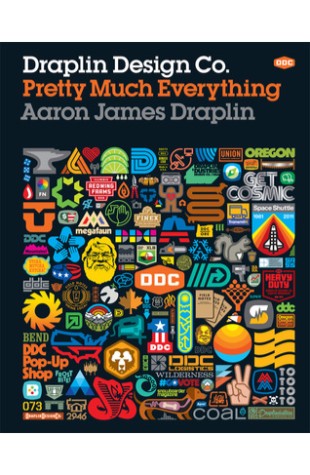 Lists It Appears On:
Lists It Appears On:
- Print Mag
- Try Design Lab
Esquire. Ford Motors. Burton Snowboards. The Obama Administration. While all of these brands are vastly different, they share at least one thing in common: a teeny, little bit of Aaron James Draplin. Draplin is one of the new school of influential graphic designers who combine the power of design, social media, entrepreneurship, and DIY aesthetic to create a successful business and way of life. Pretty Much Everything is a mid-career survey of work, case studies, inspiration, road stories, lists, maps, how-tos, and advice. It includes examples of his work—posters, record covers, logos—and presents the process behind his design with projects like Field Notes and the “Things We Love” State Posters. Draplin also offers valuable advice and hilarious commentary that illustrates how much more goes into design than just what appears on the page. With Draplin’s humor and pointed observations on the contemporary design scene, Draplin Design Co. is the complete package for the new generation of designers.
16 .) In the Bubble: Designing in a Complex World by John Thackara
 Lists It Appears On:
Lists It Appears On:
- Fast Code Design
- Goodreads
How to design a world in which we rely less on stuff, and more on people. We’re filling up the world with technology and devices, but we’ve lost sight of an important question: What is this stuff for? What value does it add to our lives? So asks author John Thackara in his new book, In the Bubble: Designing for a Complex World. These are tough questions for the pushers of technology to answer. Our economic system is centered on technology, so it would be no small matter if “tech” ceased to be an end-in-itself in our daily lives. Technology is not going to go away, but the time to discuss the end it will serve is before we deploy it, not after. We need to ask what purpose will be served by the broadband communications, smart materials, wearable computing, and connected appliances that we’re unleashing upon the world. We need to ask what impact all this stuff will have on our daily lives. Who will look after it, and how? In the Bubble is about a world based less on stuff and more on people. Thackara describes a transformation that is taking place now–not in a remote science fiction future; it’s not about, as he puts it, “the schlock of the new” but about radical innovation already emerging in daily life. We are regaining respect for what people can do that technology can’t. In the Bubble describes services designed to help people carry out daily activities in new ways. Many of these services involve technology–ranging from body implants to wide-bodied jets.
15 .) Inside the Box: A Proven System of Creativity for Breakthrough Results by Drew Boyd and Jacob Goldenberg
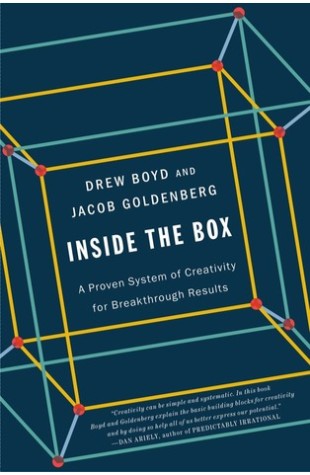 Lists It Appears On:
Lists It Appears On:
- KA Scope
- Observer
This counterintuitive and powerfully effective approach to creativity demonstrates how every corporation and organization can develop an innovative culture. Want to be creative? Then think Inside the Box. The traditional view says that creativity is unstructured and doesn’t follow rules or patterns. That you need to think “outside the box” to be truly original and innovative. That you should start with a problem and then “brainstorm” ideas without restraint until you find a solution. Inside the Box shows that more innovation— and better and quicker innovation—happens when you work inside your familiar world (yes, inside the box) using a set of templates that channel the creative process in a way that makes us more—not less—creative. These techniques were derived from research that discovered a surprising set of common patterns shared by all inventive solutions.
14 .) Lateral Thinking: Creativity Step by Step by Edward de Bono
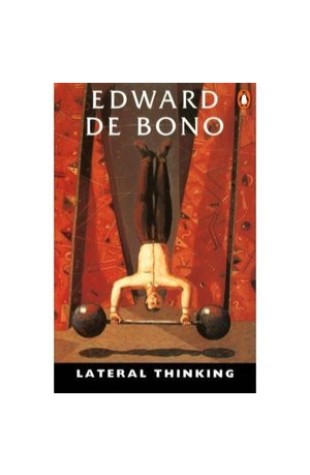 Lists It Appears On:
Lists It Appears On:
- Fast Company
- KA Scope
THE classic work about improving creativity from world-renowned writer and philosopher Edward de Bono. In schools we are taught to meet problems head-on: what Edward de Bono calls ‘vertical thinking’. This works well in simple situations – but we are at a loss when this approach fails. What then? Lateral thinking is all about freeing up your imagination. Through a series of special techniques, in groups or working alone, Edward de Bono shows how to stimulate the mind in new and exciting ways. Soon you will be looking at problems from a variety of angles and offering up solutions that are as ingenious as they are effective. You will become much more productive and a formidable thinker in your own right. ‘If more bankers and traders had read Lateral Thinking and applied the ideas of Edward de Bono to their own narrow definitions of risk, reward and human expectations, I suspect we would be in much better shape than we are’Sir Richard Branson Edward de Bono invented the concept of lateral thinking. A world-renowned writer and philosopher, he is the leading authority in the field of creative thinking and the direct teaching of thinking as a skill. Dr de Bono has written more than 60 books, in 40 languages, with people now teaching his methods worldwide.
13 .) The Achievement Habit: Stop Wishing, Start Doing, and Take Command of Your Life by Bernard Roth
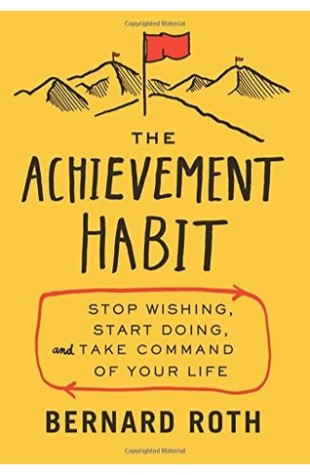 Lists It Appears On:
Lists It Appears On:
- Goodreads
- KA Scope
The co-founder of the Stanford d.School introduces the power of design thinking to help you achieve goals you never thought possible. Achievement can be learned. It’s a muscle, and once you learn how to flex it, you’ll be able to meet life’s challenges and fulfill your goals, Bernard Roth, Academic Director at the Stanford d.school contends. In The Achievement Habit, Roth applies the remarkable insights that stem from design thinking—previously used to solve large scale projects—to help us realize the power for positive change we all have within us. Roth leads us through a series of discussions, stories, recommendations, and exercises designed to help us create a different experience in our lives. He shares invaluable insights we can use to gain confidence to do what we’ve always wanted and overcome obstacles that hamper us from reaching our potential, including: Don’t try—DO; Excuses are self-defeating; Believe you are a doer and achiever and you’ll become one; Build resiliency by reinforcing what you do rather than what you accomplish; Learn to ignore distractions that prevent you from achieving your goals; Become open to learning from your own experience and from those around you; And more.
12 .) The Creative Habit: Learn It and Use It for Life by Twyla Tharp with Mark Reiter
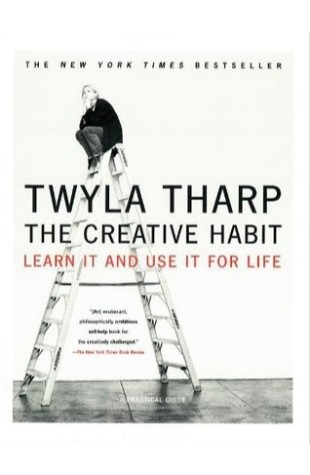 Lists It Appears On:
Lists It Appears On:
- Canva
- Fast Code Design
Creativity is not a gift from the gods, says Twyla Tharp, bestowed by some divine and mystical spark. It is the product of preparation and effort, and it’s within reach of everyone who wants to achieve it. All it takes is the willingness to make creativity a habit, an integral part of your life: In order to be creative, you have to know how to prepare to be creative. In The Creative Habit, Tharp takes the lessons she has learned in her remarkable thirty-five-year career and shares them with you, whatever creative impulses you follow — whether you are a painter, composer, writer, director, choreographer, or, for that matter, a businessperson working on a deal, a chef developing a new dish, a mother wanting her child to see the world anew. When Tharp is at a creative dead end, she relies on a lifetime of exercises to help her get out of the rut, and The Creative Habit contains more than thirty of them to ease the fears of anyone facing a blank beginning and to open the mind to new possibilities. Tharp’s exercises are practical and immediately doable — for the novice or expert. In “Where’s Your Pencil?” she reminds us to observe the world — and get it down on paper.
11 .) The Lovemarks Effect: Winning in the Consumer Revolution
 Lists It Appears On:
Lists It Appears On:
- Fast Company
- Sutherland Labs
“Ideas move mountains, especially in turbulent times. Lovemarks is the product of the fertile-iconoclast mind of Kevin Roberts, CEO Worldwide of Saatchi & Saatchi. Roberts argues vociferously, and with a ton of data to support him, that traditional branding practices have become stultified. What’s needed are customer Love affairs. Roberts lays out his grand scheme for mystery, magic, sensuality, and the like in his gloriously designed book Lovemarks .” –Tom Peters Tom Peters, one of the most influential business thinkers of all time, described the first edition of Lovemarks: the future beyond brands as “brilliant.” He also announced it as the “Best Business Book” published in the first five years of this century. Now translated into fourteen languages, with more than 150,000 copies in print, Lovemarks is back in a revised edition featuring a new chapter on the peculiarly human experience of shopping. The new chapter, “Diamonds in the Mine,” is an insightful collection of ideas for producers and consumers, for owners of small stores and operators of superstores. So forget making lists! Shopping, says Kevin Roberts, is an emotional event.
10 .) The Opposable Mind: Winning Through Integrative Thinking by Roger Martin
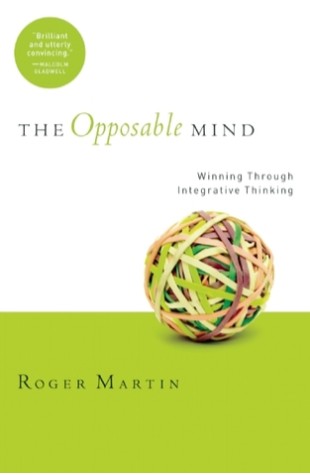 Lists It Appears On:
Lists It Appears On:
- Canva
- Goodreads
If you want to be as successful as Jack Welch, Larry Bossidy, or Michael Dell, read their autobiographical advice books, right? Wrong, says Roger Martin in The Opposable Mind. Though following best practice can help in some ways, it also poses a danger: By emulating what a great leader did in a particular situation, you’ll likely be terribly disappointed with your own results. Why? Your situation is different. Instead of focusing on what exceptional leaders do, we need to understand and emulate how they think. Successful businesspeople engage in what Martin calls integrative thinking creatively resolving the tension in opposing models by forming entirely new and superior ones. Drawing on stories of leaders as diverse as AG Lafley of Procter & Gamble, Meg Whitman of eBay, Victoria Hale of the Institute for One World Health, and Nandan Nilekani of Infosys, Martin shows how integrative thinkers are relentlessly diagnosing and synthesizing by asking probing questions including: What are the causal relationships at work here? and What are the implied trade-offs?
9 .) The User Experience Team of One by Leah Buley
 Lists It Appears On:
Lists It Appears On:
- Goodreads
- UX Design
The User Experience Team of One prescribes a range of approaches that have big impact and take less time and fewer resources than the standard lineup of UX deliverables. Whether you want to cross over into user experience or you’re a seasoned practitioner trying to drag your organization forward, this book gives you tools and insight for doing more with less.
8 .) Thinking With Type by Ellen Lupton
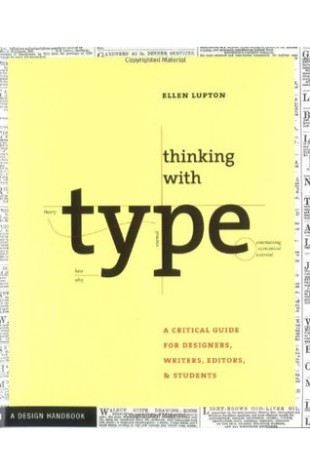 Lists It Appears On:
Lists It Appears On:
- Fast Code Design
- Try Design Lab
The organization of letters on a blank sheet—or screen—is the most basic challenge facing anyone who practices design. What type of font to use? How big? How should those letters, words, and paragraphs be aligned, spaced, ordered, shaped, and otherwise manipulated? In this groundbreaking new primer, leading design educator and historian Ellen Lupton provides clear and concise guidance for anyone learning or brushing up on their typographic skills. Thinking with Type is divided into three sections: letter, text, and grid. Each section begins with an easy-to-grasp essay that reviews historical, technological, and theoretical concepts, and is then followed by a set of practical exercises that bring the material covered to life.
7 .) This is Service Design Thinking by Marc Stickdorn
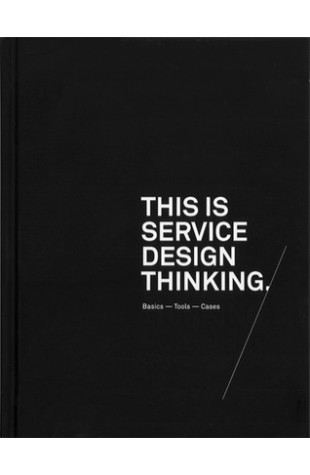 Lists It Appears On:
Lists It Appears On:
- Goodreads
This is Service Design Thinking introduces an inter-disciplinary approach to designing services. Service Design is a bit of a buzzword these days and has gained a lot of interest from various fields. This book, assembled to describe and illustrate the emerging field of service design, was brought together using exactly the same co-creative and user-centred approaches you can read and learn about inside. The boundaries between products and services are blurring and it is time for a different way of thinking: this is service design thinking. A set of 23 international authors and even more online contributors from the global service design community invested their knwoledge, experience and passion together to create this book. It introduces service design thinking in a manner accessible to beginners and students, it broadens the knowledge and can act as a resource for experienced design professionals.
6 .) Where Good Ideas Come From by Steven Johnson
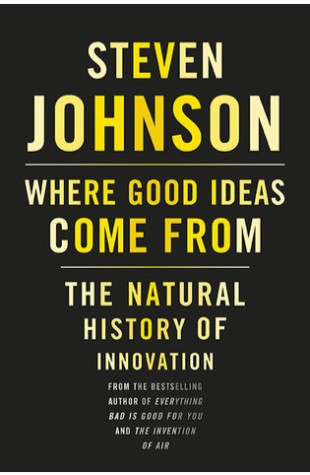 Lists It Appears On:
Lists It Appears On:
- Canva
- Goodreads
The printing press, the pencil, the flush toilet, the battery–these are all great ideas. But where do they come from? What kind of environment breeds them? What sparks the flash of brilliance? How do we generate the breakthrough technologies that push forward our lives, our society, our culture? Steven Johnson’s answers are revelatory as he identifies the seven key patterns behind genuine innovation, and traces them across time and disciplines. From Darwin and Freud to the halls of Google and Apple, Johnson investigates the innovation hubs throughout modern time and pulls out the approaches and commonalities that seem to appear at moments of originality.
5 .) 101 Design Methods: A Structured Approach for Driving Innovation in Your Organization (Paperback) by Vijay Kumar
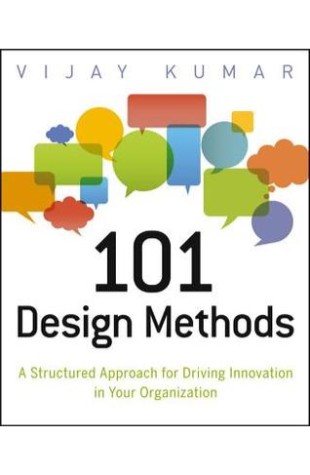 Lists It Appears On:
Lists It Appears On:
- Goodreads
- Observer
- Sun Scrappers
The first step-by-step guidebook for successful innovation planningUnlike other books on the subject, 101 Design Methods approaches the practice of creating new products, services, and customer experiences as a science, rather than an art, providing a practical set of collaborative tools and methods for planning and defining successful new offerings. Strategists, managers, designers, and researchers who undertake the challenge of innovation, despite a lack of established procedures and a high risk of failure, will find this an invaluable resource. Novices can learn from it; managers can plan with it; and practitioners of innovation can improve the quality of their work by referring to it.
4 .) The Design of Everyday Things by Don Norman
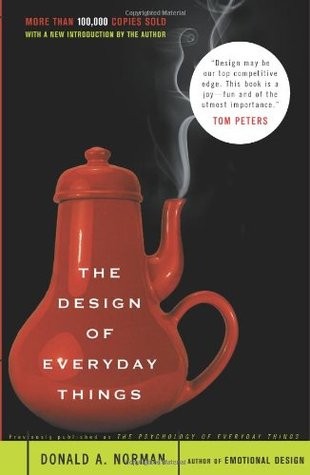 Lists It Appears On:
Lists It Appears On:
- Goodreads
- KA Scope
- Mind Sea
Anyone who designs anything to be used by humans — from physical objects to computer programs to conceptual tools — must read this book, and it is an equally tremendous read for anyone who has to use anything created by another human. It could forever change how you experience and interact with your physical surroundings, open your eyes to the perversity of bad design and the desirability of good design, and raise your expectations about how things should be designed. B & W photographs and illustrations throughout.
3 .) The Laws of Simplicity by John Maeda
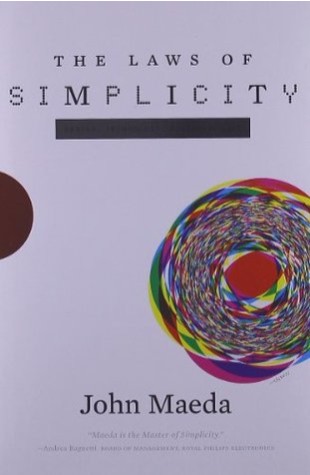 Lists It Appears On:
Lists It Appears On:
- Canva
- Fast Company
- Goodreads
Ten laws of simplicity for business, technology, and design that teach us how to need less but get more. Finally, we are learning that simplicity equals sanity. We’re rebelling against technology that’s too complicated, DVD players with too many menus, and software accompanied by 75-megabyte “read me” manuals. The iPod’s clean gadgetry has made simplicity hip. But sometimes we find ourselves caught up in the simplicity paradox: we want something that’s simple and easy to use, but also does all the complex things we might ever want it to do. In The Laws of Simplicity, John Maeda offers ten laws for balancing simplicity and complexity in business, technology, and design–guidelines for needing less and actually getting more. Maeda–a professor in MIT’s Media Lab and a world-renowned graphic designer–explores the question of how we can redefine the notion of “improved” so that it doesn’t always mean something more, something added on. Maeda’s first law of simplicity is “Reduce.” It’s not necessarily beneficial to add technology features just because we can. And the features that we do have must be organized (Law 2) in a sensible hierarchy so users aren’t distracted by features and functions they don’t need.
2 .) Designing for Growth: A Design Thinking Tool Kit for Managers by Jeanne Liedtka
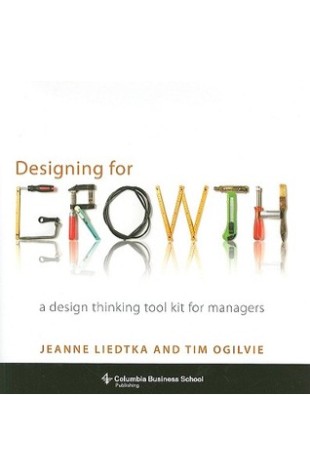 Lists It Appears On:
Lists It Appears On:
- Creativity At Work
- Fast Code Design
- Goodreads
Jeanne Liedtka and Tim Ogilvie educate readers in one of the hottest trends in business: “design thinking,” or the ability to turn abstract ideas into practical applications for maximal business growth. Liedtka and Ogilvie cover the mind-set, techniques, and vocabulary of design thinking, unpack the mysterious connection between design and growth, and teach managers in a straightforward way how to exploit design’s exciting potential. Exemplified by Apple and the success of its elegant products and cultivated by high-profile design firms such as IDEO, design thinking unlocks creative right-brain capabilities to solve a range of problems. This approach has become a necessary component of successful business practice, helping managers turn abstract concepts into everyday tools that grow business while minimizing risk.
1 .) Change by Design: How Design Thinking Transforms Organizations and Inspires Innovation by Tim Brown
 Lists It Appears On:
Lists It Appears On:
- Canva
- Fast Code Design
- Goodreads
- Sun Scrappers
- Sutherland Labs
- Try Design Lab
- UX Design
The myth of innovation is that brilliant ideas leap fully formed from the minds of geniuses. The reality is that most innovations come from a process of rigorous examination through which great ideas are identified and developed before being realized as new offerings and capabilities. This book introduces the idea of design thinking‚ the collaborative process by which the designer′s sensibilities and methods are employed to match people′s needs not only with what is technically feasible and a viable business strategy. In short‚ design thinking converts need into demand. It′s a human−centered approach to problem solving that helps people and organizations become more innovative and more creative. Design thinking is not just applicable to so−called creative industries or people who work in the design field.
The 125+ Additional Best Books For Design Thinking
| # | Book | Author | Lists |
| (Titles Appear on 1 List Each) | |||
| 25 | 20 Iconic Film Posters by Saul Bass | Print Mag | |
| 26 | A Fine Line: How Design Strategies Are Shaping the Future of Business (Hardcover) | Hartmut Esslinger | Goodreads |
| 27 | A Humument: Final Edition | Print Mag | |
| 28 | A Pattern Language: Towns, Buildings, Construction | Christopher Alexander et al. | KA Scope |
| 29 | Action Time Vision | Print Mag | |
| 30 | Anatomy of Design: Uncovering the Influences and Inspiration in Modern Graphic Design | Steven Heller and Mirko Ilic | Fast Code Design |
| 31 | Antifragile | Nassim Nicholas Taleb | UX Design |
| 32 | Art Before Breakfast: A Zillion Ways to be More Creative No Matter How Busy You Are | Danny Gregory | Canva |
| 33 | Beguiled by the Wild (2016 Edition) | Print Mag | |
| 34 | Big Questions in Creativity 2014 | Mary Kay Culpepper & Cynthia Burnett | Canva |
| 35 | Biomimicry: Innovation Inspired by Nature | Fast Company | |
| 36 | Branding: In Five and a Half Steps | Print Mag | |
| 37 | Cartographic Grounds | Print Mag | |
| 38 | Classic Penguin Cover to Cover | Print Mag | |
| 39 | Color Design Workbook: A Real World Guide to Using Color in Graphic Design | Sean Adams, Terry Stone, Noreen Morioka | Try Design Lab |
| 40 | Committed: A Memoir of the Artist’s Road | Patrick Ross | Canva |
| 41 | Conversations with Students | Medium | |
| 42 | Convivial Toolbox: Generative Research for the Front End of Design (Hardcover) | Liz Sanders | Goodreads |
| 43 | Creating Great Choices: A Leader’s Guide to Integrative Thinking (Hardcover) | Jennifer Riel | Goodreads |
| 44 | Creative Intelligence | Bruce Nussbaum | Observer |
| 45 | Creative Marker Techniques: In Combination With Mixed Media | Fast Company | |
| 46 | Creativity On Demand: How to Ignite and Sustain the Fire of Genius | Michael J. Gelb | Canva |
| 47 | Cut That Out: Collage in Contemporary Design | Print Mag | |
| 48 | Daily Rituals: How Artists Work | Mason Currey | Canva |
| 49 | Damn Good Advice (For People with Talent!) | George Lois | Canva |
| 50 | Dear Data | Print Mag | |
| 51 | Delft Design Guide | Faculty of Industrial Design Engineering | |
| 52 | Design (Tom Peters Essentials | Fast Company | |
| 53 | Design Basics | S. Pentak and A. Lauer | Fast Code Design |
| 54 | Design Driven Innovation: Changing the Rules of Competition by Radically Innovating What Things Mean (Hardcover) | Roberto Verganti | Goodreads |
| 55 | Design For People | Print Mag | |
| 56 | Design in the USA | Jeffrey Meikle | Fast Code Design |
| 57 | Design Thinking for Strategic Innovation: What They Can’t Teach You at Business or Design School (ebook) | Idris Mootee | Goodreads |
| 58 | Design Thinking: Understanding How Designers Think and Work (Paperback) | Nigel Cross | Goodreads |
| 59 | Design-Driven Innovation: Changing the Rules of Competition by Radically Innovating What Things Mean | Roberto Verganti | KA Scope |
| 60 | Design, When Everybody Designs: An Introduction to Design for Social Innovation (Hardcover) | Ezio Manzini | Goodreads |
| 61 | Design: The Invention of Desire | Print Mag | |
| 62 | Designing Your Life: Build a Life that Works for You (Paperback) | Bill Burnett | Goodreads |
| 63 | Different: Escaping the Competitive Herd | Youngme Moon | KA Scope |
| 64 | Digital Lighting and Rendering (2nd Edition | Fast Company | |
| 65 | Double Double: How to Double Your Revenue and Profit in 3 Years or Less | Creativity At Work | |
| 66 | Emotional Design: Why We Love (or Hate) Everyday Things | Donald A. Norman | Goodreads |
| 67 | Fab: The Coming Revolution on Your Desktop–from Personal Computers to Personal Fabrication | Fast Company | |
| 68 | Flow: The Psychology of Optimal Experience | Mihaly Csikszentmihalyi | Canva |
| 69 | Frame Innovation: Create New Thinking by Design | Kees Dorst | |
| 70 | Glimmer: How Design Can Transform Your Life, Your Business, and Maybe Even the World -Warren Berger | Canva | |
| 71 | Graphic Design Visionaries | Caroline Roberts | Try Design Lab |
| 72 | Hello World: Where Design Meets Life | Alice Rawsthorn | Canva |
| 73 | Herb Lubalin: Typographer | Print Mag | |
| 74 | Hidden in Plain Sight | Medium | |
| 75 | How Designers Think (Paperback) | Bryan Lawson | Goodreads |
| 76 | How to Be a Graphic Designer Without Losing Your Soul | Adrian Shaughnessy | Canva |
| 77 | How to Get Ideas | Jack Foster | Canva |
| 78 | How to Use Graphic Design to Sell Things, Explain Things, Make Things Look Better, Make People Laugh, Make People Cry, and (Every Once in a While) Change the World | Michael Bierut | Try Design Lab |
| 79 | How We Got to Now: Six Innovations That Made the Modern World | Steven Johnson | Canva |
| 80 | Human-Centered Design Toolkit: An Open-Source Toolkit To Inspire New Solutions in the Developing World (Paperback) | Ideo | Goodreads |
| 81 | Humble Masterpieces: 100 Everyday Marvels of Design | Paola Antonelli | Fast Code Design |
| 82 | Innovating for People: Handbook of Human-Centered Design Methods (eBook Kindle) | LUMA Institute | Goodreads |
| 83 | Innovation and Entrepreneurship | Peter Drucker | Sun Scrappers |
| 84 | Innovation as Usual | Paddy Miller & Thomas Wedell-Wedellsborg | Observer |
| 85 | Innovation is Everybody’s Business: How to Make Yourself Indispensable in Today’s Hypercompetitive World | Creativity At Work | |
| 86 | Inside Art Direction | Print Mag | |
| 87 | Insight Out: Get Ideas Out of Your Head and Into the World (Hardcover) | Tina Seelig | Goodreads |
| 88 | Jack’s Notebook | Gregg Fraley | Canva |
| 89 | Keep Your Lights On! | Yoris Sebastian | Canva |
| 90 | Lean UX | Jeff Gothelf | UX Design |
| 91 | Listen! Listen! | Print Mag | |
| 92 | Make Space: How to Set the Stage for Creative Collaboration (Paperback) | David Kelley | Goodreads |
| 93 | Making Ideas Happen: Overcoming the Obstacles Between Vision & Reality | Scott Belsky | Canva |
| 94 | Manage Your Day-to-Day | Jocelyn Glei | Canva |
| 95 | Manufacturing Processes for Design Professionals | Fast Company | |
| 96 | Meggs’ History of Graphic Design | Philip B. Meggs, Alston W. Purvis | Fast Code Design |
| 97 | Next Generation Business Strategies for the Base of the Pyramid | Ted London and Stu Hart | Fast Code Design |
| 98 | OMG Posters: A Decade of Rock Art | Print Mag | |
| 99 | Paul Rand: A Designer’s Art | Print Mag | |
| 100 | Picture This: How Pictures Work – Revised and Expanded 25th Anniversary Edition | Print Mag | |
| 101 | Presentation Techniques | Fast Company | |
| 102 | Process: 50 Product Designs from Concept to Manufacture | Fast Company | |
| 103 | Product Design | Rodgers and Milton | Fast Code Design |
| 104 | Psychobook | Print Mag | |
| 105 | Rapid Viz : A New Method for the Rapid Visualization of Ideas (Paperback) | Kurt Hanks | Goodreads |
| 106 | Redesigning Leadership | John Maeda. | |
| 107 | Rework | Jason Fried & David Heinemeier Hansson | UX Design |
| 108 | Running Lean | Ash Maurya | Observer |
| 109 | Self-Renewal: The individual and the innovative society | John W. Gardner | Mind Sea |
| 110 | Service Design: From Insight to Implementation (Paperback) | Andy Polaine | Goodreads |
| 111 | Show Your Work!: 10 Ways to Share Your Creativity and Get Discovered | Austin Kleon | Canva |
| 112 | Sketching: Drawing Techniques for Product Designers | Fast Company | |
| 113 | Small Is the New Big: and 183 Other Riffs, Rants, and Remarkable Business Ideas | Fast Company | |
| 114 | Solving Problems with Design Thinking: Ten Stories of What Works (Hardcover) | Jeanne Liedtka | Goodreads |
| 115 | Speculative Everything. | ||
| 116 | Steal Like an Artist: 10 Things Nobody Told You About Being Creative | Austin Kleon | Canva |
| 117 | Stimulated!: Habits to Spark Your Creative Genius at Work | Andrew Pek & Jeannine McGlade | Canva |
| 118 | Story | Robert McKee | Canva |
| 119 | Sunday Sketching | Print Mag | |
| 120 | Ten types of Innovation | Larry Keeley, Ryan Pikkel, Brian Quinn, Helen Walters | |
| 121 | The 48 Laws of Power | Fast Company | |
| 122 | The 7th Sense | William Duggan | Observer |
| 123 | The Art of Critical Making | Rosanne Somerson and Mara Hermano | Observer |
| 124 | The Art of Innovation: Lessons in Creativity from IDEO, America’s Leading Design Firm (Hardcover) | Tom Kelley | Goodreads |
| 125 | The Book of Doing | Allison Arden | Canva |
| 126 | The Copywriters Bible | How 32 of the World’s Best Advertising Writers Write their Copy | Canva |
| 127 | The Decision Book: Fifty models for strategic thinking | Mikael Krogerus | |
| 128 | The Design of Business: Why Design Thinking is the Next Competitive Advantage (Hardcover) | Roger L. Martin | Goodreads |
| 129 | The Designful Company: How to Build a Culture of Nonstop Innovation (Paperback) | Marty Neumeier | Goodreads |
| 130 | The Designing for Growth Field Book: A Step-By-Step Project Guide (Spiral-bound) | Jeanne Liedtka | Goodreads |
| 131 | The Digital Innovation Playbook | Dark Horse Innovation | |
| 132 | The Doodle Revolution: Unlock the Power to Think Differently | Canva | |
| 133 | The Elements of Style | Strunk and White | Canva |
| 134 | The Great Gatsby | F. Scott Fitzgerald | Mind Sea |
| 135 | The Industrial Design Reader | Carma Gorman | Fast Code Design |
| 136 | The Invisible Advantage: How to Create a Culture of Innovation | Soren Kaplan | Sun Scrappers |
| 137 | The Little Spark | 30 Ways to Ignite Your Creativity | Canva |
| 138 | The Myths of Innovation | Scott Berkun | Sun Scrappers |
| 139 | The New Basics | Ellen Lupton and Jennifer Cole Phillips | Fast Code Design |
| 140 | The New Drawing on the Right Side of the Brain | Betty Edwards | Canva |
| 141 | The Pancake King | Print Mag | |
| 142 | The Plague | Albert Camus | Observer |
| 143 | The Progress Principle: Using Small Wins to Ignite Joy, Engagement, and Creativity at Work | Creativity At Work | |
| 144 | The Shape of Design | Frank Chimero | Try Design Lab |
| 145 | The Ten Faces of Innovation: IDEO’s Strategies for Defeating the Devil’s Advocate and Driving Creativity Throughout Your Organization (Hardcover) | Tom Kelley | Goodreads |
| 146 | The Visual Display of Quantitative Information | Edward Tufte | Fast Code Design |
| 147 | The War of Art | Steven Pressfield | Canva |
| 148 | Things I have learned in my life so far | Stefan Sagmeister | Canva |
| 149 | Thinkertoys | Michael Michalko | Fast Code Design |
| 150 | Thinkertoys: A Handbook of Creative-Thinking Techniques (Paperback) | Michael Michalko | Goodreads |
| 151 | Thinking Fast and Slow | Daniel Kahneman | Canva |
| 152 | Thinking in Systems: A Primer (Paperback) | Donella H. Meadows | Goodreads |
| 153 | Thoughts on Design | Paul Rand | Try Design Lab |
| 154 | Toothpicks and Logos: Design in Everyday Life | Sutherland Labs | |
| 155 | Type and Image: The Language of Graphic Design Paperback | Philip B. Meggs | Fast Code Design |
| 156 | Unflattening | Nick Sousanis | Observer |
| 157 | Universal Principles of Design: 100 Ways to Enhance Usability, Influence Perception, Increase Appeal, Make Better Design Decisions, and Teach Through Design (Hardcover) | William Lidwell | Goodreads |
| 158 | Visual Grammar | Christian Leborg | Try Design Lab |
| 159 | Visual Meetings: How Graphics, Sticky Notes & Idea Mapping Can Transform Group Productivity (Paperback) | David Sibbet | Goodreads |
| 160 | Well-Designed: How to Use Empathy to Create Products People Love | Mind Sea | |
| 161 | What Can I Be? | Print Mag | |
| 162 | What is a designer | Medium | |
| 163 | What they didn’t teach you in design school | Phil Cleaver | Try Design Lab |
| 164 | What They Don’t Teach You At Harvard Business School: Notes From A Street-Smart Executive | Fast Company | |
| 165 | Work for Money, Design for Love: Answers to the Most Frequently Asked Questions About Starting and Running a Successful Design Business (Voices That Matter) | David Airey | Canva |
| 166 | World Changing: A User’s Guide for the 21st Century | Alex Steffen | Fast Code Design |
| 167 | Wrapping Things Up | Mind Sea | |
| 168 | Writing Down the Bones: Freeing the Writer Within | Natalie Goldberg | Canva |
| 169 | You Are Here: NYC: Mapping the Soul of the City | Print Mag | |
| 170 | Zig Zag: The Surprising Path to Greater Creativity | Keith Sawyer | Canva |
15 Best Books To Help With Design Thinking Sources/Lists
| Source | Article |
| Canva | 40 books to unlock your creativity and get you started on your life’s … |
| Creativity At Work | 6 Fabulous Books on Creativity, Innovation, and Design |
| Fast Code Design | 35 Books Every Designer Should Read – Fast Co Design |
| Fast Company | The 30 Most Important Books for Product Designers – Fast Company |
| Goodreads | Popular Design Thinking Books – Goodreads |
| KA Scope | 7 Best Design Thinking Books for Your New Year’s Resolutions |
| Reading List: Design, Design Thinking & Innovation | Sam Nguyen … | |
| Medium | 5 books that shaped our design thinking – Made by Many – Medium |
| Mind Sea | 7 Must Read Books For Every Product Designer – MindSea |
| Observer | The 10 Best Books on Innovation | Observer |
| Print Mag | 25 of the Best Recently Released Design Books – Print Magazine |
| Sun Scrappers | 5 fantastic books on creativity and innovation for 2018 – Blog About … |
| Sutherland Labs | Design Thinking 101: Recommended Reading – Sutherland Labs |
| Try Design Lab | 12 Amazing Books To Get You Started In Design | Designlab |
| UX Design | 5 UX Books that’ll change how you think about design – UX Collective |

